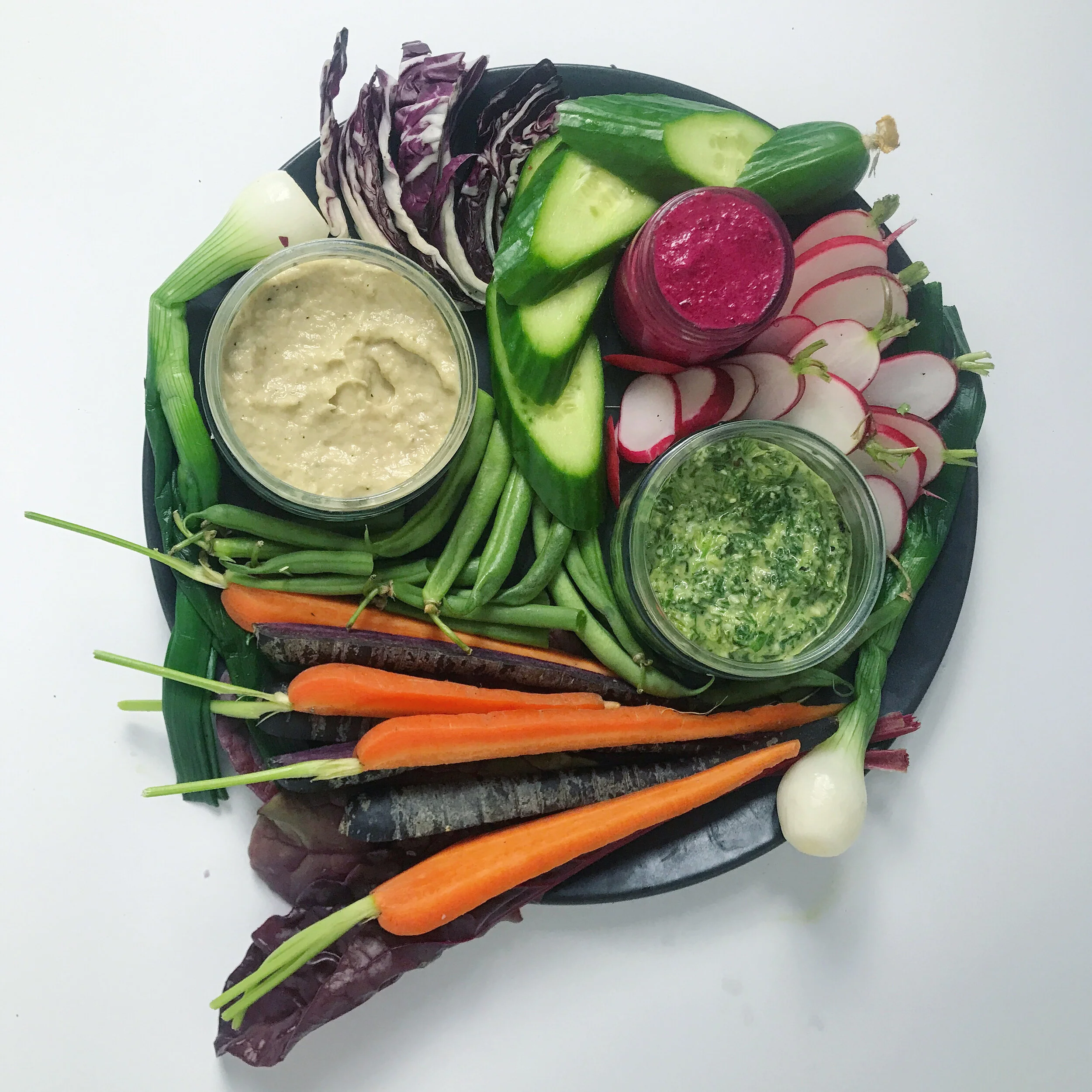Summer Crudités: Vegetable Storage and Dip Tips
Gatherings growing up were anchored by the plastic clamshell veggie tray, with compartments of broccoli florets, carrots, cauliflower, and beans surrounding a plastic tub of ‘veggie dip.’ Like a lot of what I ate growing, I have a pretentious and dumb instinct to dismiss and belittle the food. But this is crazy and wrong –– those veggie trays rocked, even with the far-flung year-round produce pinched between all that plastic.
Now, I’ve basically been orienting my kitchen around veggie trays, but call them crudité to prove I am modern with the é accent and everything. Even though they are typically best with young spring vegetables, there’s plenty of crunch ahead. Lots of crudité-friendly produce (like beans or green asparagus) can also be blanched to soften them slightly before plating.
Here, I’ll share a few dip ideas and then a quick guide on processing and storing produce to ensure the best possible texture and longest shelf life.
Baba Ganoush: blast a few eggplants on a gas flame or under a broiler, then roast covered until fully tender. Scrape and spin the eggplant to remove moisture and mix in tahini, lemon, and garlic, then slowly drizzle olive oil while whisking to emulsify and thicken.
Bagna Cauda: simmer garlic in water, dump water and add olive oil until garlic is soft. Add a tin of good anchovies and cook gently while mashing up the anchovies into a cohesive suace.
Something Yogurty: grated garlic and a squeeze of lemon. Herbs (with tarragon) and lemon. Salted and drained cucumber. Millions of combinations, but I like the combo of having one smoky-savory sauce like Baba or Bagna and one creamy, tangy sauce.
Now, for the crunch –– anything that’s nice in the hand and can support a dip (or not, whatever) will fly here so I’ll leave you be. But first, let’s talk about cleaning and storing your dipping vegetables (though you should also lacto-ferment a few beans or carrots for an extra layer!).
A bit of chin-scratching can get you pretty far. What’s going to ruin my produce? Will it get soggy? Go limp? Mold? These problems all have different solutions. Think about radishes, carrots, celery, or bell peppers –– all go limp quickly (but rarely moldy), as their rigid cell walls go flaccid with a bit of moisture loss. So, avoid the moisture loss!
Carrots and Celery: scrub, trim, and then store in a container underwater in the fridge, where they’ll stay clean and crunchy for 2+ weeks.
Cucumbers and Radish: clean, dry thoroughly, wrap in a paper towel and place in a plastic bag. You’re trying to keep water from collecting on the skin, but still keep a cool, moist environment so they don’t dry out. For radishes, remove leaves and root tip to keep the crunch.
Tomatoes: no one-tomato-fits-all answer. Could your tomato use a bit more ripening? Then store out on the counter, stem-side down. Might the tomato rot with another two days out? Then store it in the fridge. Tomatoes, like many juicy fruits prone to spoilage, should not be washed until you’re ready to serve. Doing so can open the field for spoilage microbes and introduces moisture which can also cause issues.
Stone Fruits and Berries: ok, we’re in cheese board territory now, but nonetheless: berries, peaches, pears, plums –– when stone fruits and berries are nearing peak ripeness, keep them loose in the fridge for max airflow, minimal moisture content, and a chance for ripening ethylene gasses to drift off. Like tomatoes, don’t wash them to keep the skin microbes happy and avoid introducing extra water.
Small Head Lettuces: don’t bother washing radicchio or endives, as the downside of introducing water is too great.




